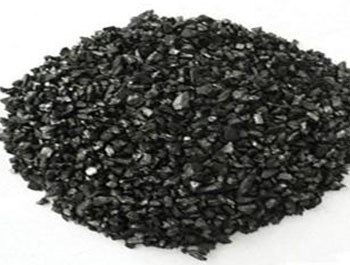Contact person: Mr. Chen
Mobile + 86-18104072230
Tel. + 86-417-5861677
Fax: 0417-5244777
website: en.yklhnh.com
Address: Yong'an Town, Dashiqiao City, Liaoning Province
In common and special refractories, the common varieties are as follows:
acidic
Silica brick and clay brick are used more. Silica brick is a kind of silica product containing more than 93% SiO2. The raw materials used are silica and waste silica brick. Silica brick has strong resistance to acid slag, but it is easy to be eroded by alkaline slag. Its softening temperature under load is very high, which is close to its fire resistance. After repeated calcination, the volume does not shrink or even slightly expand, but it is resistant to corrosion
Thermal shock is poor. Silica brick is mainly used in coke oven, glass furnace, acid steel furnace and other thermal equipment. Clay brick contains 30% ~ 46% alumina. It is mainly made of refractory clay with fire resistance of 1580 ~ 1770 ℃ and good thermal shock resistance. It belongs to weak acid refractory and has corrosion resistance to acid slag and is widely used. It is a kind of refractory with production capacity.
Mullite and corundum are the main crystal phases in high alumina products. The content of corundum increases with the increase of alumina content. Corundum products with more than 95% alumina content are a kind of high-quality refractories with wide application. Chrome brick is mainly made of chromite, the main crystal phase is chromite. It has good corrosion resistance to steel slag, but poor thermal shock resistance and low deformation temperature under high temperature load. Chrome magnesia bricks made of chrome ore and magnesia in different proportions have good thermal shock resistance and are mainly used as top bricks of basic open hearth furnaces.

Carbonaceous products are another kind of neutral refractories. According to the composition of carbonaceous raw materials and the mineral composition of products, they can be divided into three categories: carbon brick, graphite products and silicon carbide products. Carbon brick is made of high-grade petroleum coke as raw material, tar and asphalt as binder, which is fired under the condition of air isolation at 1300 ℃. Graphite products (except natural graphite) were prepared by graphitization of carbonaceous materials in electric furnace at 2500-2800 ℃. Silicon carbide products are fired at 1350-1400 ℃ with silicon carbide as raw material and clay, silicon oxide and other binders. Silicon carbide and silicon powder can also be made into silicon nitride silicon carbide products in nitrogen atmosphere in electric furnace.
High temperature thermal expansion, high thermal conductivity, low thermal shock resistance. It has good salt resistance and is not wetted by metal and slag. It is light in weight and is a high-quality high-temperature resistant material. The disadvantage is that it is easy to oxidize at high temperature, so it is not suitable to be used in oxidizing atmosphere. Carbon products are widely used in high temperature furnace lining (furnace bottom, hearth, lower part of furnace body, etc.) and lining of smelting non-ferrous metal furnace. Graphite products can be used as lining of reaction tank and petrochemical autoclave. Silicon carbide and graphite products can also be made into crucibles for smelting copper, gold and light alloys.
alkalinity
Magnesium products are the representative. It contains more than 80% ~ 85% MgO and is mainly composed of periclase. The main raw materials for producing magnesia bricks are magnesite and magnesia from seawater, which are calcined at high temperature from magnesium hydroxide extracted from seawater. It has good resistance to alkaline slag and iron slag. The melting point of pure magnesia is as high as 2800 ℃, so the refractoriness of magnesia brick is higher than that of clay brick and silica brick. Since the mid-1950s, the production of basic refractories has gradually increased, while the production of clay bricks and silica bricks has been reduced due to the use of oxygen blowing converter and basic open hearth furnace top. Basic refractories are mainly used in open hearth furnace, oxygen blowing converter, electric furnace, nonferrous metal smelting and some high temperature thermal equipment.